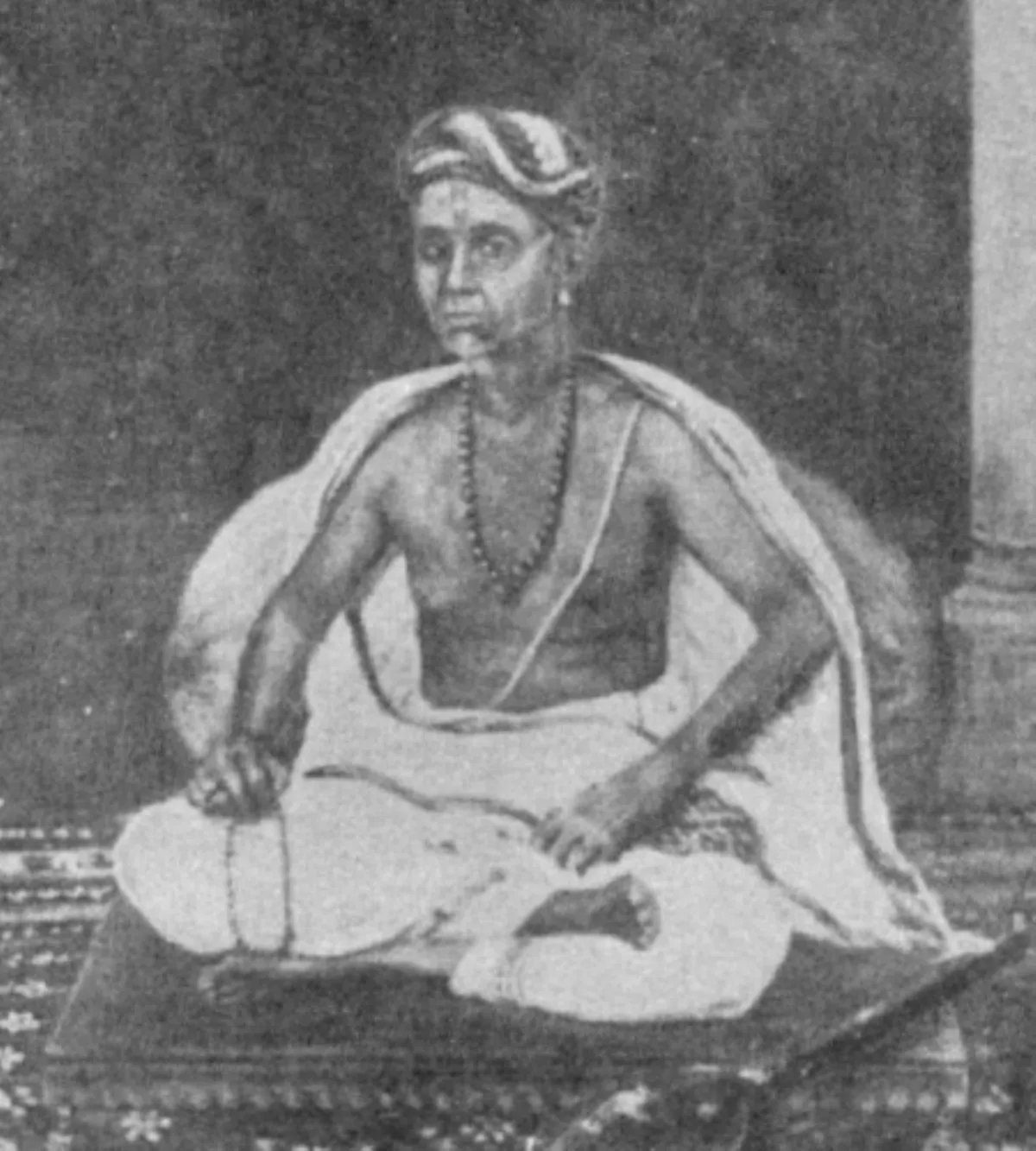 1.
1. Sadguru Tyagaraja Swami, known as Tyagayya, and in full as Kakarla Tyagabrahmam, was a Hindu saint and composer of Carnatic music, a form of Indian classical music.

 1.
1. Sadguru Tyagaraja Swami, known as Tyagayya, and in full as Kakarla Tyagabrahmam, was a Hindu saint and composer of Carnatic music, a form of Indian classical music.
Tyagaraja composed hundreds of devotional compositions, most in Telugu and in praise of Rama, many of which remain popular today.
Tyagaraja was born Kakarla Tyagabrahmam in 1767 to a Telugu Vaidiki Mulakanadu Brahmin family in Thiruvarur in present-day Thiruvarur District of Tamil Nadu.
Tyagaraja's family belonged to the Smarta tradition and Bharadvaja gotra.
Tyagaraja was the third son of his parents, Kakarla Ramabrahmam and Seethamma.
Tyagaraja's maternal grandfather was Kalahastayya, popularly addressed as Veena Kalahastayya as he was a noted veena player.
Tyagaraja was said to have learnt to play the veena in his childhood from Kalahastayya.
Tyagaraja spent most of his life in Thiruvaiyaru in the single room house that was donated to his father Ramabrahmam by Thuljaji, the Thanjavur ruler in whose court Ramabrahmam worked.
Tyagaraja took siddhi on a Pushya Bahula Panchami day, 6 January 1847, at the age of 79, a day after he took the vow of Sannyasa and was initiated into the order of Advaita Dasanami sanyasis.
Tyagaraja was interred on the banks of the Kaveri river at Thiruvaiyaru the very next day.
Tyagaraja began his musical training at an early age under Sonthi Venkata Ramanayya, the chief vidwan in the court of Thanjavur ruler Thuljaji, where Tyagaraja's father Ramabrahmam worked.
Tyagaraja hero-worshipped the celestial sage Narada; a reference to this is Tyagaraja's krithi Vara Narada.
Legend has it that a hermit taught him a mantra invoking Narada, and Tyagaraja, meditating on this mantra, received a vision of Narada and was blessed with the book Svararnavam by the sage.
Tyagaraja was said to have mastered the nuances of music from this book.
Tyagaraja's compositions focused not only on the technicalities of classical music, but on the expression.
Tyagaraja composed his first kriti, "Namo Namo Raghavaaya" in Sanskrit, in the Desika Todi raga and inscribed it on the walls of his house.
Tyagaraja's compositions are mainly of a devotional and philosophical nature.
Tyagaraja introduced the concept of sangati into the sahityam of a krithi, that was seen as a paradigm shift in Carnatic Classical Music.
Tyagaraja has composed krithis in praise of Krishna, Shiva, Devi, Ganesha, Muruga, Saraswati, and Hanuman.
The king sent an invitation, along with many gifts, inviting Tyagaraja to attend the royal court.
Tyagaraja was not inclined towards a career at the court, as he felt it would chain his creativity and his pursuit of the divine and rejected the invitation outright.
Tyagaraja was always immersed in his devotion to Rama and led a spartan way of life.
Tyagaraja willingly taught music to anyone who approached him, thus earning him many disciples across various stages of his life.
The primary reason being, certain groups of Tyagaraja's disciples studied under him only during specific periods of his life, limiting their exposure to compositions created outside their own tutelage years.
One of the earliest compilations of Tyagaraja's kritis was done by AM Chinnaswami Mudaliar, who, in 1893, published a volume titled, Oriental Music In European Notation.
The latter is the most popular of Tyagaraja's operas, and is a creation of the composer's own imagination and has no basis in the Bhagavata Purana.
Tyagaraja composed a number of simple devotional pieces appropriate for choral singing.
All the compositions of Tyagaraja show the way for the systematic development of the respective ragas.